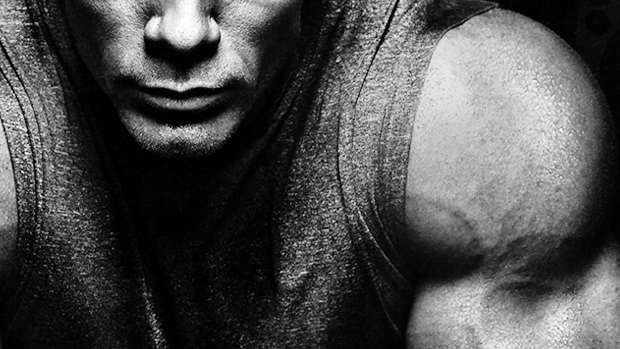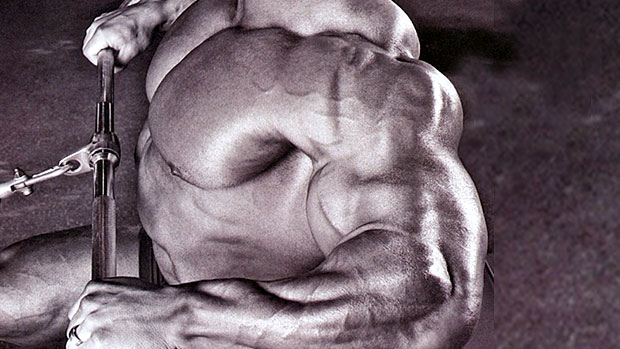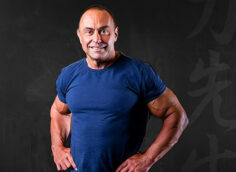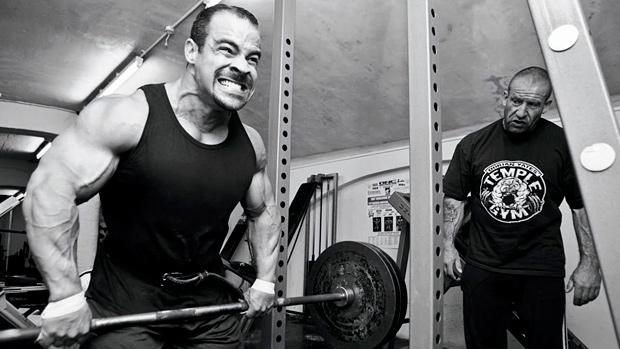Here's what you need to know...
- You can be strong without being big and you can be big without being strong.
- Heavy lifting induces myofibrillar hypertrophy, which is the form of hypertrophy commonly seen in strength and power athletes.
- Moderate lifting induces sarcoplasmic hypertrophy, which is the type of hypertrophy you see in bodybuilders.
- Try lifting heavy early in the workout and lifting moderate late in the workout. Or try lifting heavy early in the week and lifting moderate later in the week.
Don't Be All Show and No Go
You can be strong without being big and you can be big without being strong, but most guys want to be big and strong.
You can't do that by lifting wimpy weights. You need to do some heavy lifting and you need to do some moderate lifting.
The best results happen when you do a blend of both.
Two Types of Muscle Growth
There are huge advantages to lifting both heavy and moderate weights. For one, you get a combination of myofibrillar and sarcoplasmic hypertrophy.
Heavy lifting tends to induce myofibrillar hypertrophy, which involves an increase in contractile protein and filament density. This form of hypertrophy is common in strength and power athletes.
Moderate lifting tends to induce sarcoplasmic hypertrophy, an increase in the volume of non-contractile protein and semi-fluid plasma between muscle fibers. This is the type of hypertrophy that the typical bodybuilder displays.
Another advantage of combining heavy and moderate lifting is what's known as post-activation potentiation. This simply means that by lifting heavy loads first, moderate loads feel like feathers afterward.
At the end of the day, you end up getting more out of the moderate sets than you would have without doing the heavy sets beforehand.
That's why mixing heavy powerlifting sets with moderate bodybuilding sets is a popular method of training. Combining both styles of lifting really packs on mass.

Four Ways to Do It
1. Heavy Early, Moderate Late in a Workout
Monday
- A. Deadlift
- B. One-Arm Row
- C. Pulldown
Wednesday
- A. Back Squat
- B. Leg Press
- C. Leg Extension
Friday
- A. Incline Bench Press
- B. Flat Dumbbell Press
- C. Incline Dumbbell Flye
- A. Exercises: 5 sets x 4 reps (Month 1), 6 sets x 3 reps (Month 2), 7 sets x 2 reps (Month 3)
- B. Exercises: 5 sets x 10 reps
- C. Exercises: 3-4 sets x 10-12 reps
So on Monday you'd start off with deadlifts, an "A" exercise. You'd do 5 sets of 4 reps (heavy). You'd then do one-arm rows (a "B" exercise) for 5 sets of 10, and pulldowns (a "C" exercise) for 3-4 sets of 10-12, both of which are moderate movements.
This type of training has been called "powerbuilding" or "power bodybuilding" as popularized by Mike O'Hearn.
The program will give you results, but a word of warning: Don't go full out on the A exercises. Keep a bit in reserve. Start with 70% 1RM the first month, 80% 1RM the second month, and 90% 1RM the third month.
2. Heavy Early in the Day, Moderate Late in the Day
Monday A.M.
- A1. Back Squat
- A2. Pull-Up
Monday P.M.
- A1. Wide-Stance Back Squat
- A2. Seated Reverse-Grip Cable Row
Wednesday A.M.
- A1. High-Handle Hex-Bar Deadlift
- A2. Close-Grip Bench Press
Wednesday P.M.
- A1. Low-Handle Hex-Bar Deadlift
- A2. Parallel-Bar Dip
Friday A.M.
- A1. Front Squat
- A2. Standing Military Press
Friday P.M.
- A1. Heels-Elevated Barbell Hack Squat
- A2. Incline Neutral-Grip Dumbbell Press
- A.M. Workouts: 6-8 sets x 3 reps (using your 5RM load)
- P.M. Workouts: 4-5 sets x 8-10 reps (using your 12RM load)
During the P.M. workouts, keep a bit in reserve initially and then take the last set to failure.

3. Heavy Early in the Week, Moderate Late in the Week
Monday A.M.
- A. Bench Press
- B. Floor Press
- C. Deadlift
- D. Rack Deadlift
1 set of 5 reps for a warm-up and 5 singles using 90% 1RM
Tuesday
- A. Seated Press
- B. Half Press
- C. Full Squat
- D. Half Squat
1 set of 5 reps for a warm-up and 5 singles using 90% 1RM
Thursday
- A. Bench Press
- B. Deadlift
- C. Chin-Up
5 sets of 5-7 reps using maximum weight each set
Friday
- A. Seated Press
- B. Full Squat
- C. Row
5 sets of 5-7 reps using maximum weight each set
This routine was popularized by the late Anthony Ditillo. I've made one slight revision to the program, substituting a chin-up for an arm curl.
Rest two minutes between sets and add weight whenever possible. Ditillo claimed that this was the best routine he came across for increasing bulk and power simultaneously.
4. Heavy on One Set, Moderate on the Next Set
Monday
- Sumo-Style Deadlift
Tuesday
- Close-Grip Bench Press
Thursday
- Back Squat
Friday
- Neutral-Grip Chin-Up
This is a form of contrast training where you perform multiple waves of a main lift, alternating between a heavy set of 1-3 reps, followed by a moderate set of 8-10 reps.
Try to increase the weight slightly each wave. Here's what a sample progression for the back squat might look like (1RM = 405 pounds):
Wave 1
- Set 1. 2 reps x 365 pounds with 90% 1RM
- Set 2. 8 reps x 285 pounds with 70% 1RM
Wave 2
- Set 3. 2 reps x 370 pounds
- Set 4. 8 reps x 290 pounds
Wave 3
- Set 5. 2 reps x 372.5 pounds
- Set 6. 8 reps x 295 pounds
After completing 3-5 waves of the main lift during upper body days, add some biceps, triceps, and forearm work.
After completing 3-5 waves of lower body days, add some hamstring, calf, and abdominal work.





